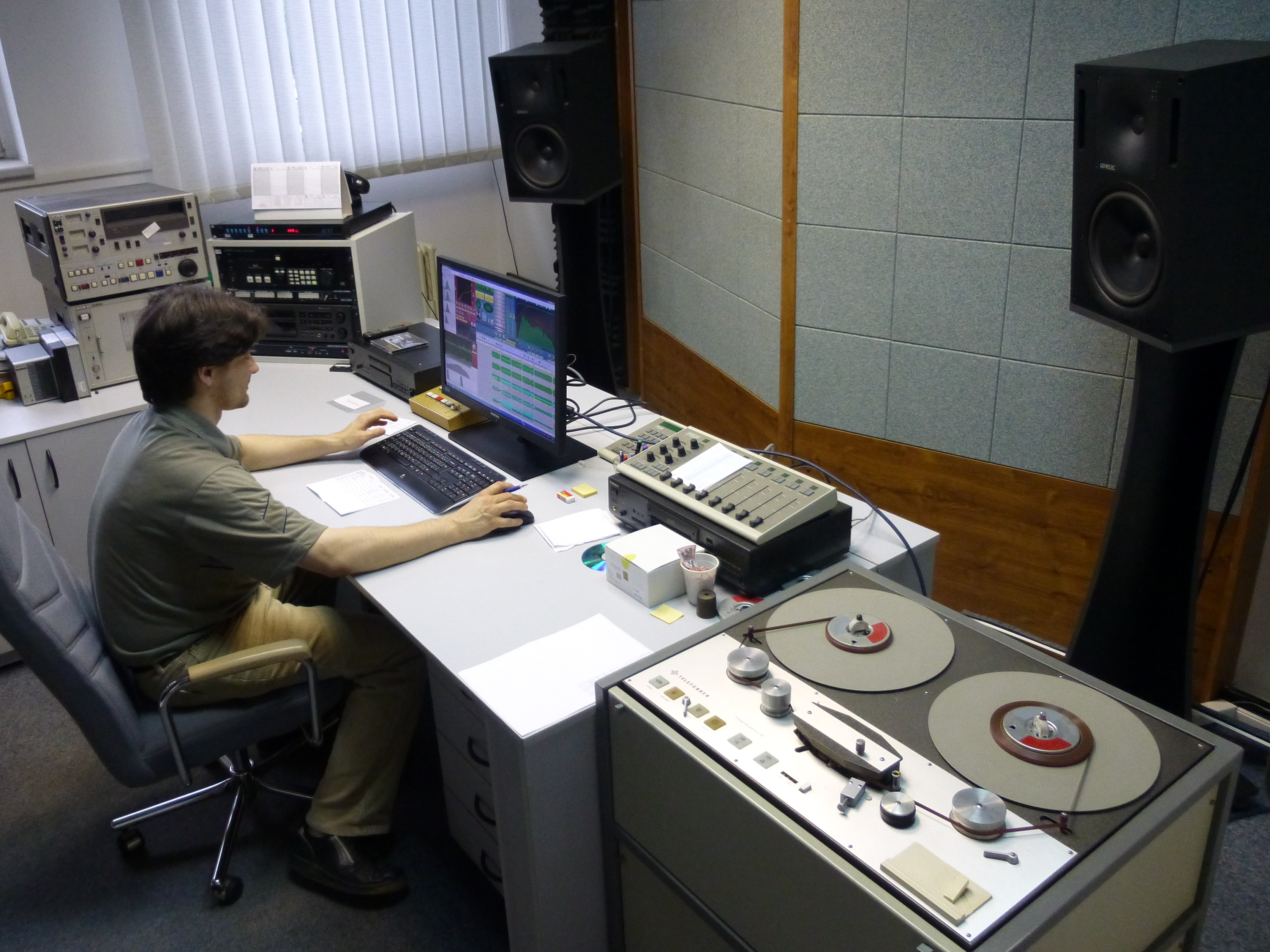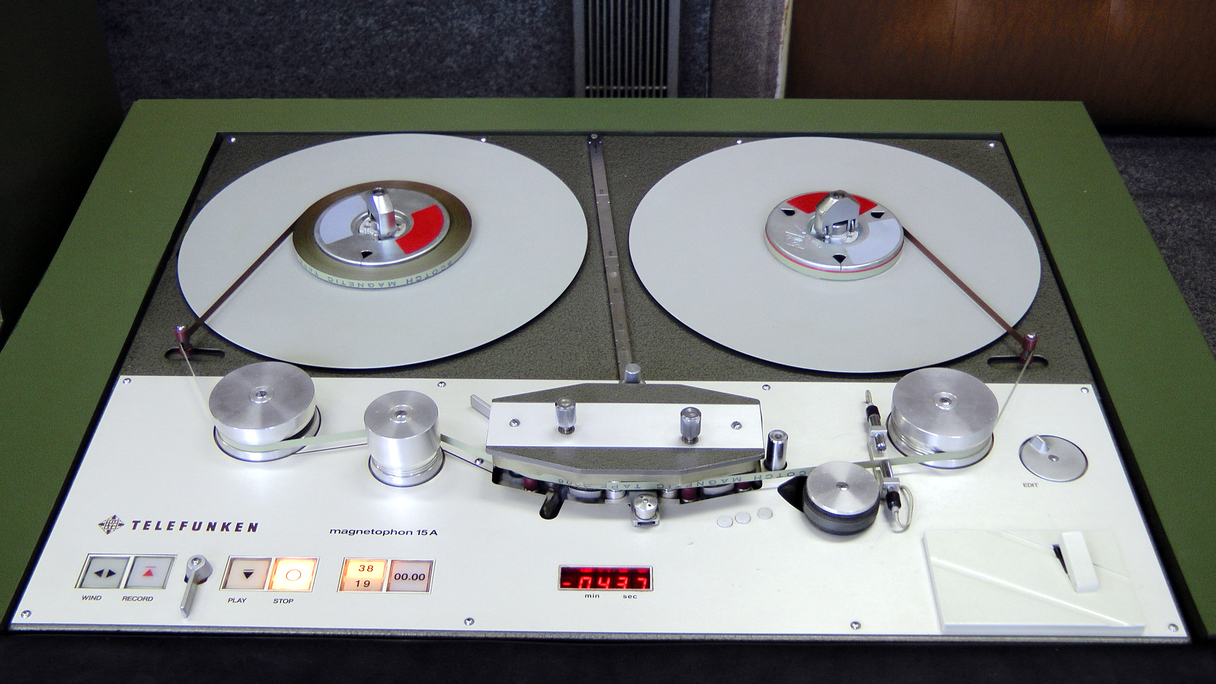The new Vinyl Visual Mastering is an integrated system intended for the first part of vinyl manufacturing. It consists of both the specialized audio mastering process for vinyl medium and the master cutting using DMM or lacquer lathes. It is developed by a team of skilled engineers and technicians with many years of experience in physics, electronics, computer programming and vinyl manufacturing technologies.
 The VVM system has been built around Neumann's cutting lathes. Their basic functionality was extended by new capabilities and some original parts were completely replaced by newly designed software algorithms. The whole cutting process is controlled by a computer, all important values and lathe status are showed on a graphical user interface and logged for later inspection, so the cutting engineer can focus on music.
The VVM system has been built around Neumann's cutting lathes. Their basic functionality was extended by new capabilities and some original parts were completely replaced by newly designed software algorithms. The whole cutting process is controlled by a computer, all important values and lathe status are showed on a graphical user interface and logged for later inspection, so the cutting engineer can focus on music.
Basic principle
The basic principle can be compared to the difference between taking photographs on film and using digital photography. Before pressing the shutter-release on a camera you usually have to set various mutually-opposing parameters (aperture, shutter-speed, sensitivity, focus, etc.). If these are set correctly the result is a nice sharp picture. Incorrect setting leads to blurred, dark or over-exposed shots. In the case of photos on film the result of the process is known for sure after the film is developed and the prints are made. The electronics of a digital camera are able to evaluate a scene according to a given setting and show the result on the display. Before the shutter-release is pressed the camera warns us that the result will probably not be good.
 The new vinyl mastering system is based on a similar principle. Prior to mastering is started, a computer application analyses the audio data and creates a virtual groove in the computer’s memory in the same way as the cutting lathe. It is therefore possible to know in advance the space required and all critical passages which cannot be recorded or later played back without distinct distortion. The computer application also allows the original signal to be adapted to remove only the undesirable elements of the signal which are causing the distortion.
The new vinyl mastering system is based on a similar principle. Prior to mastering is started, a computer application analyses the audio data and creates a virtual groove in the computer’s memory in the same way as the cutting lathe. It is therefore possible to know in advance the space required and all critical passages which cannot be recorded or later played back without distinct distortion. The computer application also allows the original signal to be adapted to remove only the undesirable elements of the signal which are causing the distortion.
Separate premastering and cutting
 Our premastering specialists working in acoustically separated studios can carefully and without haste check and analyze supplied audio files, run cutting simulations several times to find out the optimal settings for every side without too many changes to the sound. Our goal is to use only those necessary corrections (level changes, EQ also with linear phase filters, compressors, limiters, EE mono-filters etc.) which will help cutting better, minimize risk of distortion and allow the best frequency response in the widest ranges of audible frequencies.
Our premastering specialists working in acoustically separated studios can carefully and without haste check and analyze supplied audio files, run cutting simulations several times to find out the optimal settings for every side without too many changes to the sound. Our goal is to use only those necessary corrections (level changes, EQ also with linear phase filters, compressors, limiters, EE mono-filters etc.) which will help cutting better, minimize risk of distortion and allow the best frequency response in the widest ranges of audible frequencies.
We use a groove processor with our lathes – a new software pitch-control process which can save space during cutting efficiently and is better than any ordinary lacquer lathe or any hardware pitch control computers, even the ones used in other DMM lathes in the world. It allows us to cut longer recordings without reducing of cutting levels.
Additional advantages of the new system are better quality control of all the cutting process, faster way of work and all cutting parameters stored in a database. Such a cutting is easily repeatable process in case of any damage to plates or lacquers in next production steps or in case of re-issues where a perfect replica is needed. We can also directly compare audio signals recorded from feedback coils of a cutting head, from a copper plate or from a test pressing sample and synchronize them with the source audio to hear any differences and also to see them visually after in-depth analyses.
Key features
-
Direct two-way communication between the computer and the cutting lathe.
-
High quality non-destructive signal processing with unique vinyl algorithms. The original audio data remains untouched for a future use.
-
Individual mix settings can be adjusted for arbitrary parts of audio.
-
Vinyl measuring system - geometric, physical, dynamic and load measurements in time or frequency domain.
-
Cutting simulator – a very accurate virtual cutting which will find critical parts in supplied audio yet before the real cut.
-
Groove processor - controls track pitch, groove width and warps audio signals to compensate possible cutting and playback distortion. Every cut can have a different track pitch strategy.
-
Differential sound and graphic analysis can play or show differences between original audio and processed signal, feedback or vinyl record signal.
-
Mathematical model of stylus and groove – the software computes a virtual groove based on geometric dimensions of a defined cutting stylus and can compare it visually with a real groove photo from a microscope.
Signal Path
1. Digital source
The new mastering system is able to work with most common digital audio formats (WAV, AIFF, FLAC, APE, DDP, CD-Audio discs, CUE/BIN images etc.) and use high-resolution audio files with sampling rates up to 192 kHz and up to 32-bit resolution.
All necessary audio processing is realised by the Vinyl Visual Mastering software.
No external boxes, plug-in filters, delay lines and sample rate converters are used.
Only one stereo signal is fed to our lathes. No forward audio signal is needed to control track pitch and groove width.
Top quality PrismSound Orpheus interfaces are used for DA /AD conversions.
2. Analogue tape
The original Neumann's two-way path with Telefunken M15A tape player is used. This is the old all-analog processing method with no delay line and no AD/DA converters.
 There's a possibility to combine both methods: to digitize the tape in advance, run a simulation in the new mastering software, find the optimal settings there and then set the parameters on a Neumann's analogue mastering console and cut fully analogue from the tape.
There's a possibility to combine both methods: to digitize the tape in advance, run a simulation in the new mastering software, find the optimal settings there and then set the parameters on a Neumann's analogue mastering console and cut fully analogue from the tape.